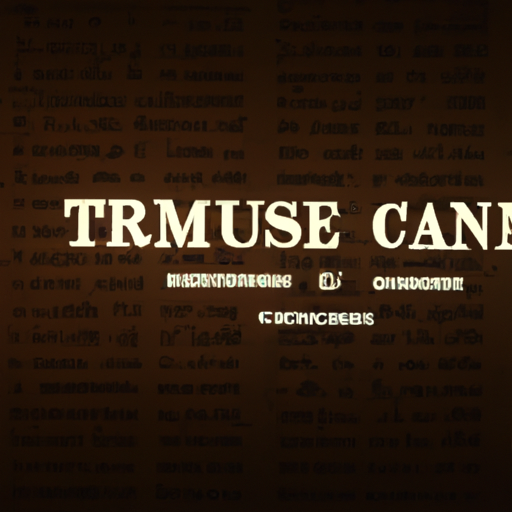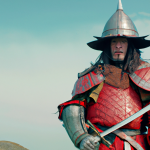The Significance of Classical Texts in Traditional Chinese Medicine (TCM)
Classical Texts: TCM’s Historical Documentation
Traditional Chinese Medicine (TCM) is a holistic approach to healthcare that has been practiced for thousands of years. At the heart of TCM lies a rich collection of classical texts that serve as a historical documentation of this ancient healing system. These texts hold immense significance in the world of TCM, providing valuable insights into the principles, theories, and practices that have shaped this traditional medicine.
One of the key reasons why classical texts are so important in TCM is that they offer a window into the past. They allow us to understand the origins of TCM and how it has evolved over time. By studying these texts, we can gain a deeper appreciation for the wisdom and knowledge that has been passed down through generations of practitioners.
The classical texts also serve as a foundation for TCM education and training. They provide a comprehensive framework for understanding the principles and theories that underpin this ancient healing system. Students of TCM spend years studying these texts, delving into the intricacies of acupuncture, herbal medicine, and other therapeutic modalities. By immersing themselves in the wisdom of the classical texts, students can develop a solid understanding of TCM and its applications.
Moreover, classical texts play a crucial role in the clinical practice of TCM. Practitioners often refer to these texts to guide their diagnosis and treatment strategies. The classical texts offer detailed descriptions of various diseases, their causes, and the corresponding treatment methods. By consulting these texts, practitioners can gain valuable insights into the best course of action for their patients.
In addition to their practical applications, classical texts also contribute to the ongoing research and development of TCM. Scholars and researchers delve into these texts to uncover hidden gems of knowledge that can be applied to modern healthcare. By bridging the gap between ancient wisdom and contemporary science, these researchers are able to validate the efficacy of TCM and explore new avenues for its integration into mainstream medicine.
The significance of classical texts in TCM extends beyond the realm of healthcare. These texts are a testament to the rich cultural heritage of China and its enduring traditions. They provide a glimpse into the worldview of ancient Chinese society, their understanding of the human body, and their approach to health and wellness. By preserving and studying these texts, we can gain a deeper appreciation for the cultural and historical context in which TCM emerged.
In conclusion, classical texts hold immense significance in the world of TCM. They serve as a historical documentation of this ancient healing system, offering valuable insights into its principles, theories, and practices. From education and clinical practice to research and cultural preservation, these texts play a vital role in the continued growth and development of TCM. By embracing the wisdom of the past, we can pave the way for a brighter future for traditional Chinese medicine.
Exploring the Historical Documentation of Classical Texts in TCM

Classical Texts: TCM’s Historical Documentation
Traditional Chinese Medicine (TCM) is a holistic approach to healthcare that has been practiced for thousands of years. At the core of TCM are classical texts that serve as historical documentation, providing valuable insights into the development and evolution of this ancient healing system. Exploring these texts not only offers a glimpse into the past but also sheds light on the principles and practices that continue to guide TCM practitioners today.
One of the most well-known classical texts in TCM is the Huangdi Neijing, also known as the Yellow Emperor’s Inner Canon. Believed to have been written around 200 BCE, this text is a compilation of medical theories, diagnostic methods, and treatment techniques. It is divided into two parts: the Suwen (Basic Questions) and the Lingshu (Spiritual Pivot). The Suwen focuses on the theoretical foundations of TCM, while the Lingshu delves into practical applications.
The Huangdi Neijing is considered the foundation of TCM and has greatly influenced the development of subsequent texts. It provides a comprehensive understanding of the human body, the interplay of yin and yang, and the flow of qi (vital energy). By studying this text, TCM practitioners gain a deep appreciation for the holistic nature of health and the importance of balance in maintaining well-being.
Another significant classical text in TCM is the Shanghan Lun, or Treatise on Cold Damage Disorders. Written by Zhang Zhongjing in the Eastern Han Dynasty (25-220 CE), this text focuses on the diagnosis and treatment of febrile diseases caused by external pathogens. It provides detailed descriptions of various patterns of illness and offers herbal formulas to address each condition.
The Shanghan Lun is highly regarded for its clinical insights and practical applications. It emphasizes the importance of individualized treatment and the use of herbal medicine to restore balance and harmony in the body. By studying this text, TCM practitioners gain a deeper understanding of the intricate relationship between the body and the environment, and how external factors can impact health.
In addition to these foundational texts, there are numerous other classical texts in TCM that offer valuable insights into specific areas of practice. For example, the Jingui Yaolue, or Synopsis of the Golden Chamber, written by Zhang Zhongjing, focuses on the treatment of internal diseases. This text provides detailed descriptions of various diseases and offers herbal formulas and acupuncture techniques to address each condition.
The Bencao Gangmu, or Compendium of Materia Medica, written by Li Shizhen in the Ming Dynasty (1368-1644), is another important text in TCM. It is a comprehensive compilation of medicinal substances, their properties, and their therapeutic uses. This text serves as a valuable reference for TCM practitioners in prescribing herbal remedies.
Studying classical texts in TCM is not only a way to honor the wisdom of ancient healers but also a means to enhance the practice of modern TCM. These texts provide a historical context for the principles and techniques used in TCM today. By delving into the rich knowledge contained within these texts, TCM practitioners can deepen their understanding of the underlying theories and refine their clinical skills.
In conclusion, classical texts serve as historical documentation of TCM, offering valuable insights into the development and evolution of this ancient healing system. The Huangdi Neijing, Shanghan Lun, Jingui Yaolue, and Bencao Gangmu are just a few examples of the wealth of knowledge contained within these texts. By studying them, TCM practitioners can gain a deeper understanding of the principles and practices that continue to guide their work, ultimately benefiting their patients and contributing to the ongoing legacy of TCM.
Analyzing the Influence of Classical Texts on TCM Practice
Classical Texts: TCM’s Historical Documentation
Traditional Chinese Medicine (TCM) is a holistic approach to healthcare that has been practiced for thousands of years. At the core of TCM are classical texts that serve as historical documentation of the principles and practices that have shaped this ancient healing system. These texts have had a profound influence on TCM practice, providing a foundation for understanding the human body, diagnosing illnesses, and prescribing treatments. In this article, we will explore the significance of classical texts in TCM and how they continue to shape the practice today.
One of the most influential classical texts in TCM is the Huangdi Neijing, also known as the Yellow Emperor’s Inner Canon. This text, believed to have been written around 200 BCE, is a comprehensive compilation of medical theories and practices. It covers a wide range of topics, including anatomy, physiology, diagnosis, and treatment methods. The Huangdi Neijing is considered the cornerstone of TCM, providing a systematic framework for understanding the human body and its relationship with the environment.
Another important classical text is the Shanghan Lun, or Treatise on Cold Damage. Written by Zhang Zhongjing in the 2nd century CE, this text focuses on the diagnosis and treatment of febrile diseases. It provides detailed descriptions of various patterns of illness and offers specific herbal formulas for their treatment. The Shanghan Lun is highly regarded for its clinical insights and has greatly influenced the practice of herbal medicine in TCM.
The importance of classical texts in TCM cannot be overstated. They serve as a bridge between the past and the present, connecting modern practitioners with the wisdom and knowledge of their predecessors. These texts provide a historical context for understanding the development of TCM and offer valuable insights into the principles and theories that underpin the practice.
While TCM has evolved over time, with new techniques and treatments being developed, the fundamental principles outlined in the classical texts remain unchanged. This continuity is a testament to the enduring wisdom of these ancient texts and their relevance in today’s healthcare landscape.
In addition to their historical significance, classical texts also play a practical role in TCM practice. They serve as reference guides for practitioners, providing a wealth of information on various diseases, their causes, and appropriate treatment methods. By studying and understanding these texts, TCM practitioners can enhance their diagnostic skills and improve their ability to provide effective treatments.
Furthermore, classical texts are not only valuable to TCM practitioners but also to researchers and scholars interested in the history and development of traditional medicine. These texts offer a glimpse into the medical practices of ancient China and provide valuable insights into the cultural and social context in which TCM emerged.
In conclusion, classical texts are an integral part of TCM’s historical documentation. They provide a foundation for understanding the principles and practices of this ancient healing system and continue to shape the practice of TCM today. By studying these texts, practitioners can deepen their knowledge and enhance their ability to provide effective treatments. Furthermore, classical texts offer valuable insights into the history and development of traditional medicine, making them a valuable resource for researchers and scholars. As TCM continues to gain recognition and popularity worldwide, the importance of classical texts in preserving and advancing this ancient healing system cannot be overstated.


